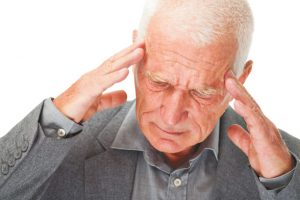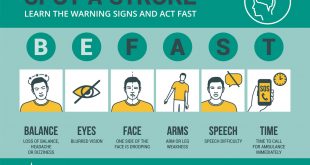

By the time you are done reading this article, several people in the United States are likely to have experienced a stroke. In fact, according to the Centers for Disease Control and Prevention, someone in the United States has a stroke every 40 seconds. Sadly, stroke is also a leading cause of serious long-term disability, with half of all stroke survivors over age 65 experiencing reduced mobility. What’s more, every four minutes, someone in this country dies from a stroke.
Unfortunately, while that makes this all-too-common occurrence a leading cause of death and disability, many people are not familiar with stroke’s signs and symptoms. That’s especially unfortunate because blood flow to the brain is impacted when someone is having a stroke, so the sooner help is provided, the less potential there is for damage to occur.
What Is a Stroke?
A stroke happens when an artery that carries blood to the brain is blocked or when a blood vessel ruptures, causing brain tissue to die as it is deprived of vital blood supply.
Not all strokes are the same. The most common types include:
• Ischemic strokes occur when an artery in the brain is blocked and forms a blood clot. This is the most common type of stroke and, according to the
American Stroke Association®, ischemic strokes account for nearly nine out of every 10 strokes. Typical symptoms include facial drooping, arm weakness or speech difficulty.
• A Transient Ischemic Attack (TIA) occurs when the blood supply to the brain is temporarily blocked. TIAs are sometimes referred to as “mini strokes” as these small blockages may cause symptoms and then go away. However, they can serve as an important warning sign and should be taken seriously.
• A hemorrhagic stroke occurs when a blood vessel ruptures in the brain and leaks blood into or around brain tissue. People experiencing hemorrhagic strokes may describe them as the worst headache of their lives. In addition to an intensive headache, weakness, nausea and vomiting can also be symptoms.
Think F.A.S.T.
The American Stroke Association provides guidelines on stroke symptoms.
These include:
F = Face Drooping
Does one side of the face droop or is it numb? Ask the person to smile.
Is the person’s smile uneven?
A = Arm Weakness
Is one arm weak or numb? Ask the person to raise both arms. Does one arm drift downward?
S = Speech Difficulty
Is speech slurred?
T = Time to call 911
The Association also advises you to watch for other symptoms of a possible stroke, including sudden:
NUMBNESS or weakness of face, arm, or leg, especially on one side of the body
CONFUSION, trouble speaking or understanding speech
TROUBLE SEEING in one or both eyes
TROUBLE WALKING, dizziness, loss of balance or coordination
SEVERE HEADACHE with no known cause
Nationally Recognized Stroke Care at Manatee Memorial Hospital
The good news for residents in the Bradenton community is that, when every minute matters, quality stroke care is close to home. Manatee Memorial Hospital’s Stroke and Cerebrovascular Center offers a rapid-response Stroke Alert Team to evaluate and treat all stroke emergencies 24 hours a day, seven days a week. The team-based approach allows for streamlined treatment and services. In fact, recent clinical studies indicate that a team approach improves patient outcomes.
The Stroke and Cerebrovascular Center and the Neuro Intensive Care Unit offer advanced diagnostics and stroke treatments. Included among our treatment methods is thrombolytic therapy, which can greatly benefit patients if administered within three hours of a stroke, and endovascular stroke treatment, such as mechanical thrombectomy and carotid angioplasty.
For more information, visit
www.manateememorial.com/services/stroke-and-cerebrovascular-center
206 Second Street East
Bradenton, FL 34208
941-746-5111
Physicians are independent practitioners who, with limited exceptions, are not employees or agents of Manatee Memorial Hospital. The hospital shall not be liable for actions or treatments provided by physicians. For language assistance, disability accommodations and the nondiscrimination notice, visit our website.
 Southwest Florida's Health and Wellness Magazine Health and Wellness Articles
Southwest Florida's Health and Wellness Magazine Health and Wellness Articles

